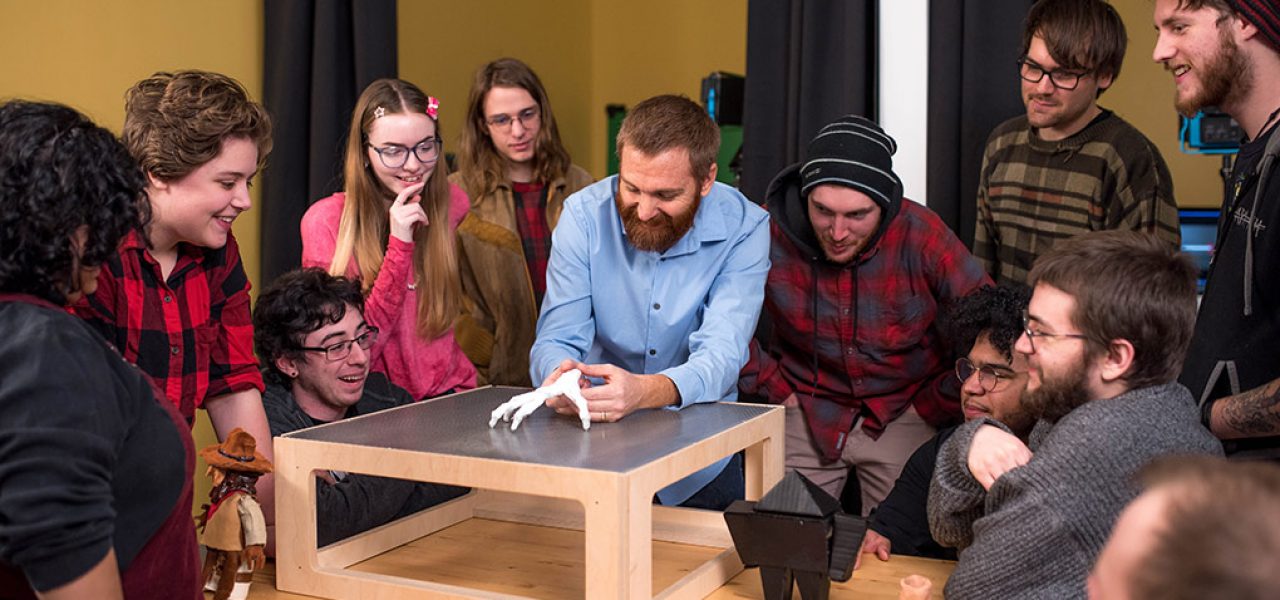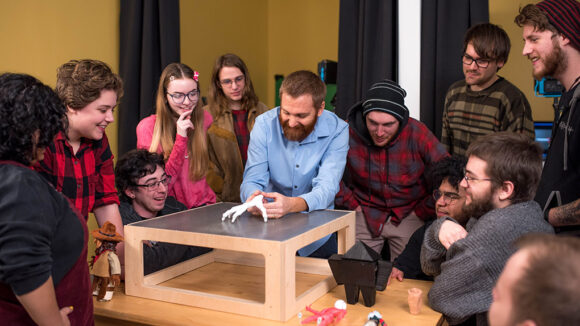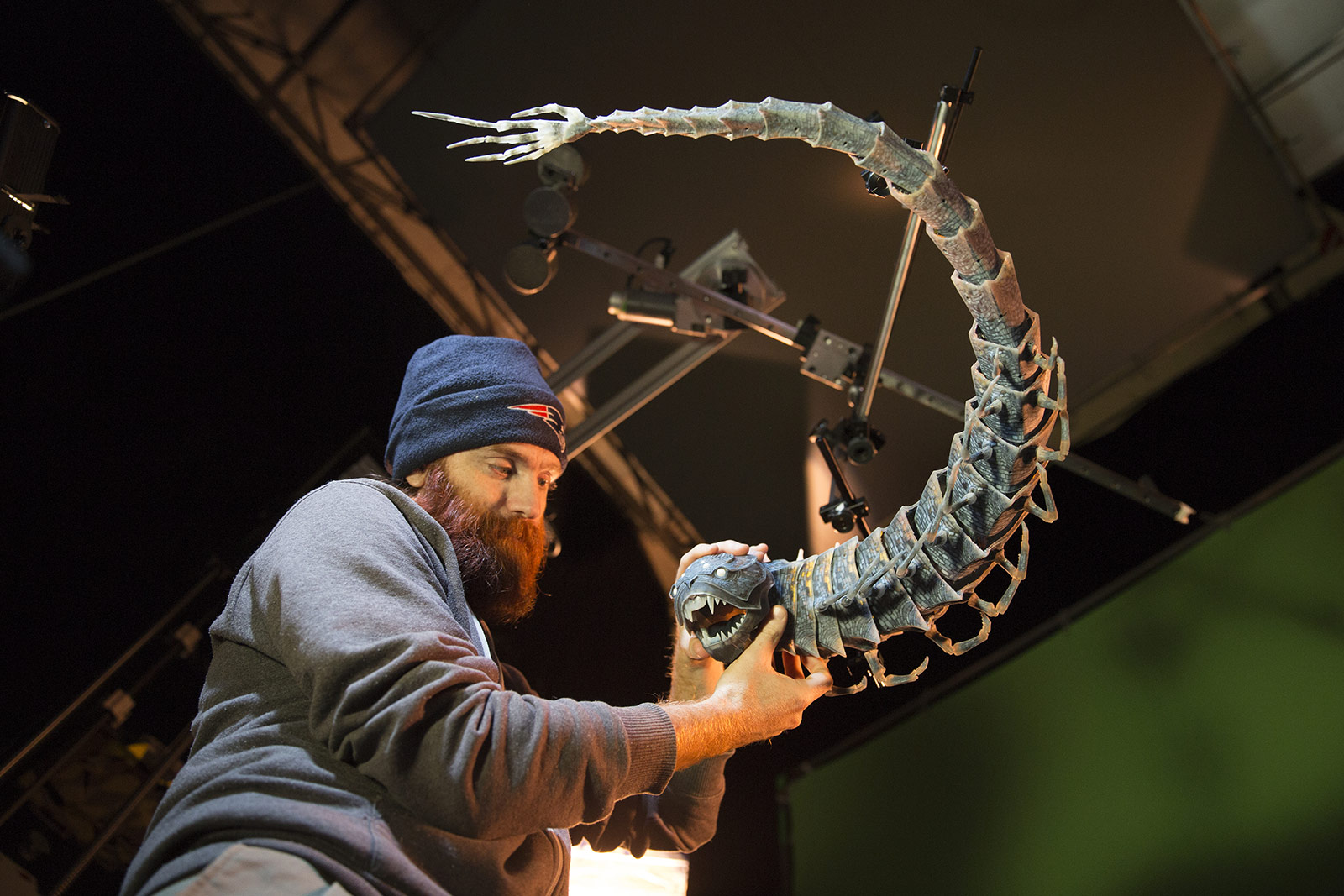

Three Essential Tips For Strengthening Your Character Animation
Adam Fisher is an award-winning animation artist known for his work on Laika’s Coraline, Paranorman, and Kubo and the Two Strings, and most recently Laika’s Missing Link, premiering in April 2019. He’s also an Assistant Professor of Animation and Game Art at Maine College of Art (MECA) in Portland, Maine.
Below, Adam shares three tips that are not only core components to what he teaches his students at Maine College of Art, but which have also served him well during his professional animation career.
These are just a few of the professional insights Adam incorporates into the curriculum for his students in the Animation and Game Art Program at MECA. To learn more about the Animation and Game Art program curriculum or to apply for the Fall 2019 class, visit the school’s website.
Now, we’re going to pass the post over to Adam, who has these three tips to share for strengthening character animation performances…
1. Know your character.
It seems simple and obvious, but character is something that is often not given the attention it deserves in animation. It’s easy to let the plot dictate what actions are needed, then try to come up with interesting ways to carry out these actions. However, it’s very important to really understand who the character is you are bringing to life.
According to Aristotle, Character and Thought are the two natural causes of action. Similarly, Walt Disney said, “In most instances, the driving force behind action is mood, personality, and attitude of character, or all three.”
These ideas are quite similar. In short, we need to understand how our characters think. Who are they? What are their motivations? What do they need? A character depends on their personality to determine how they act and move. As artists, we have to know this personality inside and out so we understand how to move them and make them perform. This is essential, because, on the flip side, our audience is depending on absorbing and processing these actions to be informed of the personality of the characters! If we are giving them incorrect or inconsistent information through our choice of actions, then they are getting misleading information about the character. This will lead to either general confusion or a weak performance.
An example I use in my character animation class at Maine College of Art is this classic clip from Snow White and the Seven Dwarfs. In this scene, the dwarves are all leaving for work. They each, in turn, say goodbye to Snow White. They all go through the same basic action… they step up, say a few words, then move along after getting a kiss on the top of their head. However, the choices made regarding the way each dwarf moves through these actions completely define their character and tells the audience everything they need to know about who they are. Bashful walks up shyly while wringing his hat in his hands… Grumpy puts up a gruff front but makes sure he gets his turn, softening up when he thinks no one is looking.

2. Use Live-Action Video for Reference.
Often this step is skipped when animators are in the heat of production. I get it. It takes time to get yourself set up with a camera and tripod. You have to find space to shoot. People might be watching… I can tell you from personal experience that it is well worth getting over all of these excuses and implementing this as an essential step in your workflow.
Take the time to think about the shot, then to record either yourself or a friend (preferably, one who can act) performing the action the way you hope to portray it. Try a few different things. It is a wonderful way to test drive a few different interpretations of an action without having to animate a single frame. It also allows you to show a director or supervisor exactly what you are planning and allows them the chance to give you notes even before you complete a blocking pass.
As fantastic a tool as reference can be, it can be tricky to master. It never really works to simply record an action and then copy it frame by frame. This usually leads to either boring animation, or it looks stiff and underwhelming. It is a tool you should use to help you figure out your posing, timing, arcs, etc. Study the mechanics of the motion… where is the weight? How is the character’s balance maintained? Where are good places to exaggerate poses and things like overlap and follow through? You can even use it as a background layer in the early phases and try to draw your character over top of it… But, remember, this is animation. You need to exaggerate and push your poses and timing for the sake of making something fun and interesting to watch… not to mention enhancing the clarity and emphasizing what is important to your character, shot or scene.
There’s a passage in the Frank Thomas and Ollie Johnston book, The Illusion of Life, where they talk about using reference.
“The Camera records what is there, but it records EVERYTHING that is there, with an impartial lack of emphasis. On the other hand, an artist shows what he SEES is there, especially that which might not be perceived by others. His drawings can be closer to the true realism of an object because he can be selective and personal in what he chooses to show.”
This says it all. The animator can imitate life, but by choosing what to show, how to stage it, and what to emphasize and exaggerate, they are able to clarify the action for the audience, so they interpret it exactly the way we want them to. Which is important, because as I said earlier, the actions define the characters.
3. Keep it simple.
As you build up your performance, it is essential to keep in mind what the most important thing is that you need the audience to understand. What is the purpose of the shot? Why is it there? What needs to happen in order for the shot to do its job? This will vary drastically depending on the scene you are animating. In a big action scene, choreography is very important. In a more subtle acting scene, you may need to communicate the emotions very clearly. It’s important to boil the performance down to the essentials. Don’t add any extra secondary animation that doesn’t directly support and enhance the impact of the main action.
I have a character animation reel that I cut together from three very different projects I animated on for three different studios. The animation style for each varies wildly, yet this rule proved just as important across the board.
The first chunk of the reel is from a scene I animated in Anomalisa for Starburns Industries. The style of this film was super realistic. The puppets look almost human. The scene was a very intimate moment in which Lisa sings a surprisingly moving version of “Girls Just Wanna Have Fun” for Michael, the film’s protagonist. It proved to be an exercise in restraint. She needed to remain seated the whole time, with eyes closed through most of it. She pours her soul into the song but is a very shy and self-conscience person. I had to be extremely careful not to over-do her gestures and actions, as the voice (provided by Jennifer Jason Leigh) was the true hero performance of the scene. Everything I did had to support the vocals without upstaging them.
The second chunk of the reel is from Kubo and the Two Strings from Laika. I animated about half of the Moonbeast scene near the end of the film. This was a moment of great conflict between the hero and villain. There is a lot of dialogue between the two that happens over the course of a very carefully planned and choreographed series of actions. The tension between them builds to the very end. Each shot had a very specific purpose to fulfill. Clarity was essential. My job was to make sure the animation accomplished exactly what was needed with no distractions.
The third and final chunk of the reel shows bits from a handful of scenes I animated for season one of Tumble Leaf at Bix Pix Entertainment. This is a show aimed at preschool-aged kids. Going big and broad was part of the direction that could be assumed for pretty much every shot of the series. While this gave us license to regularly throw in actions such as backflips in mid-conversation between characters, we still had to be very careful to make sure actions were exceptionally clear and didn’t confuse the point of a shot or scene. With a very young audience, anything that distracted from an essential plot point could be disastrous. So, big actions were encouraged, but they had to fully support the main idea without muddying the waters.
These three projects were all extremely different in style, but each valued simplicity and clarity in their own particular way.

.png)